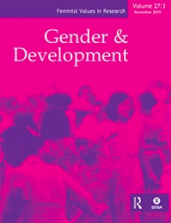Gender, conflict, and peacebuilding: how conflict can catalyse positive change for women

Overview
Although modern-day armed conflict is horrific for women, recent conflict and post-conflict periods have provided women with new platforms and opportunities to bring about change. The roles of women alter and expand during conflict as they participate in the struggles and take on more economic responsibilities and duties as heads of households. The trauma of the conflict experience also provides an opportunity for women to come together with a common agenda. In some contexts, these changes have led women to become activists, advocating for peace and long-term transformation in their societies. This article explores how women have seized on the opportunities available to them to drive this advocacy forward: including the establishment of an international framework on women, peace, and security that includes United Nations Security Council Resolution 1325 and other international agreements and commitments to involving women in post-conflict peace-building. The article is based on on-the-ground research and capacity-building activities carried out in the Great Lakes Region of Africa on the integration of international standards on gender equality and women’s rights into post-conflict legal systems.
This article is hosted by our co-publisher Taylor & Francis. For the full table of contents for this and previous issues of this journal, please visit the Gender and Development website.
Keywords
Additional details
Author(s)
How to cite this resource
Citation styles vary so we recommend you check what is appropriate for your context. You may choose to cite Oxfam resources as follows:
Author(s)/Editor(s). (Year of publication). Title and sub-title. Place of publication: name of publisher. DOI (where available). URL
Our FAQs page has some examples of this approach.
Causing Hunger: An overview of the food crisis in Africa

Oxfam in Gender Emergencies Standards 2022-25

Oxfam Gender in Emergencies Strategy 2022-25

